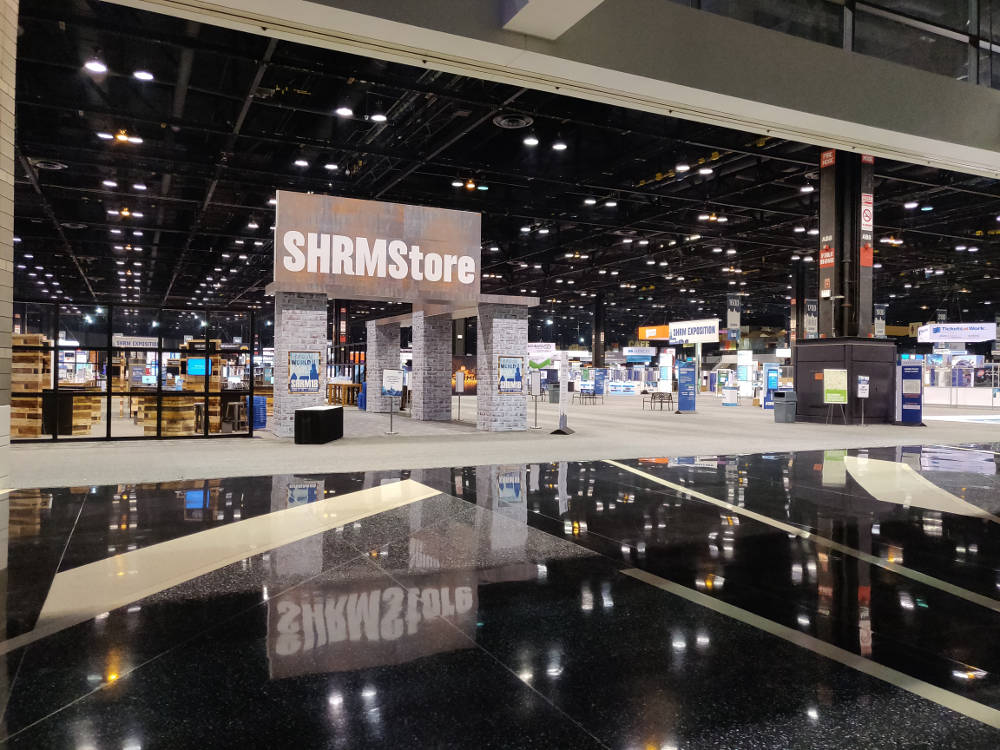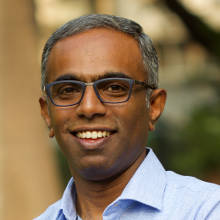Change is the only constant—that’s an aphorism that is bandied at every workplace. Almost every day! Yet, the workplace is well short of breath keeping pace with the changes that are shaping work. From Taylor’s principles to the Stanford Prison Experiment, many cornerstones of approaches to work have either been relegated to a small corner, simply overshadowed by societal evolution, or proven plain false.
The need to continuously make sense of changes, refresh understanding and shift approaches is important. A need that has had me seek people, platforms and conferences around the world every year. It has challenged me to go beyond the obvious and seek out underlying patterns through deeper conversation. The annual conference of the Society of Human Resource Management (SHRM) has been on my mind for a while now. The promise of scale and a possibility of building a greater understanding of the context and thinking in a large market, and more importantly, a market which plays host to firms that are innovating at breakneck speed, had me make the trip to Chicago.

The #SHRM18 conference—with 17,000-plus delegates, 450-plus exhibitors, 200-plus sessions—reeked scale. This crown jewel among SHRM events had immaculate production quality, pyro-techniques and power statements from the stage. If the scale of the marketing effort targeting the HR function was any indication, getting better at ‘work’ is a huge opportunity. It’s another matter that the challenges that confront workplaces cannot be solved by slick software and neat marketing alone. It requires hard conversations, uncomfortable changes and a hard-nosed approach to stay human. More on that later.
For now, here are three key elements that stay with me, after a week of sprinting across floors, attending sessions and catching up with colleagues from around the world at #SHRM18. Before we get there, the conference reminded me to read Arie De Geus and his book The Living Company again. I have read the book several times over and every single time it helps me deal with what’s on the drawing board. I went to the book this time as well.
“…companies die because their managers focus exclusively on producing goods and services and forget that the organisation is a community of human beings that is in business—any business—to stay alive. Managers concern themselves with land, labour, and capital, and overlook the fact that labour means real people,” De Geus wrote in an article in Harvard Business Review. “To them, assets—and profits—are like oxygen: necessary for life but not the purpose of life.”
1. The Need to Evolve
In my line of work, we encounter a number of organisations where “This is who we are” comes up quickly, and stays through the conversation. It often becomes a sophisticated way of saying, “We won’t change.” Adam Grant, a professor at Wharton School and one of the world’s 10 most influential management thinkers, spoke of two different aspects that trigger this line of thought.
The first is about who you hire. Do you hire people who fit into the way things are or would you seek out the ones who will stand out and help shape a different path?
The answer: It depends!
It depends on where you are. If you are in the early stages of starting up and growing further, well, you may want to seek out people who fit in. At some stage though, once the organisation stabilises, the need to change track stares at your face.
Don't let your workplace become a cultural museum. Culture fit is a recipe for groupthink—it weeds out diversity of thought.
— Adam Grant (@AdamMGrant) June 19, 2018
Hire, reward, and promote cultural contributors: the misfits, original thinkers, and disagreeable givers who stretch and enrich the culture.#SHRM18 pic.twitter.com/zlcNOEyYQ2
Continuing to hire for “culture fit” will shear the organisation off innovation and creativity. Space for the “disagreeable giver” to have a point of view heard portends well for the organisation. Organisations thus cannot just stop at hiring beyond “culture fit”, but must also create the space for a culture to evolve.
The level of challenge at work needs to be raised; don't let work get mundane. When there is no challenge, work gets mundane and people don’t feel engaged.
But that’s tough work that does not fit into easy templates.
2. Conversation and Connection
The absence of conversation spawns disengagement to a degree that it cannot be redeemed by the fun and games silliness that passes for ‘employee engagement’. Organisations foster decline by focusing on transaction. There are several obvious signs. People become bot like, and work is a chore. Disagreements are frowned upon. Email thrives. And a general sense of “I have to pay my bills” pervades.
Steve Browne, vice president director of Human Resources at US-based pizzeria chain LaRosa’s, Inc and the author of HR on Purpose, said it well: “If you have to put the ‘human’ back in Human Resources then I can’t imagine what your workplace is like now.”
“If you have to put the ‘human’ back in Human Resources then I can’t imagine what your workplace is like now..” @sbrownehr #SHRM18
— Jane Watson (@JsarahwatsHR) June 20, 2018
@sherylsandberg “We need to make it ok for people to talk about the challenges that other people have.” Avoid letting the in-group/out-group bias @davidrock101 talked about prevent us from moving forward. #SameTeam #BetterTogether #SHRM18
— Jennifer Gere (@jentherecruiter) June 20, 2018
Humanness in people comes alive in conversation. It necessitates a willingness to sit down, listen and engage. That very act of dialogue leads to discovery and engagement. Plus, most importantly, it sows the seeds for trust to take root.
Yet, I am privy to several leadership conversations where the leader wonders why the conversations don’t take place despite so many technologies and platforms being available. Well, it’s never about the technology, is it?
Dan Schawbel, partner and research director at Future Workplace, and founder of New York consultancy Millennial Branding and WorkplaceTrends.com, put it in simple terms while outlining the top 10 trends for 2018: “Technology has created the illusion of connection while spawning loneliness.”
“Technology has created the illusion of connection while spawning loneliness” - @DanSchawbel #SHRM18 #SHRM18Blogger
— Kavi (@_Kavi) June 18, 2018
It is key for leadership to lead the way in having conversations that are rich in meaning. In smaller organisations, that is the best technology one can have. In larger organisations, adapting work to foster more conversations and facilitating change is important.
3. The Prevalence of Choice
It was from a passing mention by Sheryl Sandberg, COO of Facebook, who was in conversation with Adam Grant, that I got a neat takeaway—one that has prompted me to ask rather uncomfortable questions.
There are two questions that we can ask around in their organisations. “What are you working on” and “What are you NOT Working on?” - @sherylsandberg That’s a tip to take home. #SHRM18 #shrm18blogger
— Kavi (@_Kavi) June 20, 2018
And so, what are you NOT working on?
Have you thought about it? At least, I hadn’t in a few areas that I should have. Our choices are usually based on what we want to do. To be conscious of what we are leaving out while we go after what we want to do, and then to consciously leave it out is a different matter.
To become aware of the choice set and evolve it even further before going after one or two, helps in many ways. One, it brings a degree of focus on what’s selected. Even more is the continuous seeking of options and exercising choice.
Those then are the essence of my thinking and reflection from SHRM18. We need to keep the conversation going and make continuous meaning of what’s happening around us. Within organisations and in the broader context of society as well.
One more thing. We are all so focused on finding solutions. “Which software? Which vendor? What can I do? Like now!” It is a general theme that permeates the work landscape. Every time I see it, I can’t help but emphasise the need to pull back a bit.
It will do us all good if we learn to stay with the problem. The problem cannot be (and should not be) defined by the tool that is available. To stay with the problem would need patience, tenacity, curiosity and a bunch of other things.
When slick communication, and a pitch that purports to be a solution to all people woes lands before an organisation, it will be of immense benefit to all to take a step back and ask the question: “What is the problem?”
Engaging in an inclusive dialogue around a problem is a humane way of approaching it. That by itself provides the platform for real solutions to emerge.


